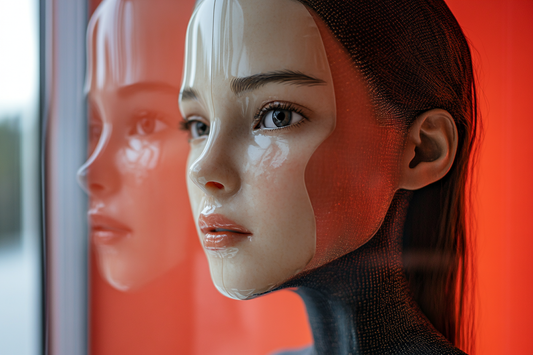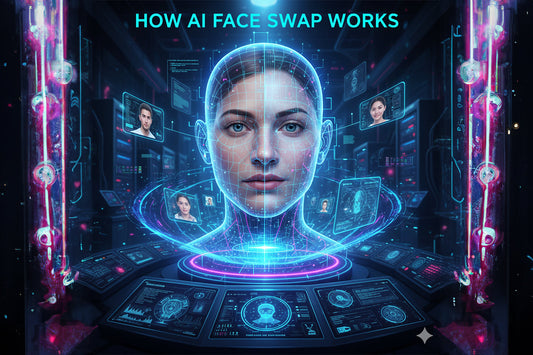
AI Face Swap in Gaming: How It’s Changing Avatars & VR – Exploring the use of face swap tech in gaming.
Share
Gamers love to game, and game devs love to give their players even more opportunities to game. From the most humble of TTRPG systems to the grandest of MMORPGs, players have always loved immersing themselves in the story, the characters they play, and the setting. Often, it doesn't even need to be a game, and you will catch dudes being dudes and making strange noises in the microphones when the "apes together strong" moment hits their happy gland out of the blue. Gaming spaces never miss out on an opportunity to try out the latest technology, as seen through the appearance of VR support and immersion-based exploration games. The console controllers vibrated before we had proper body massagers, and now we see that the hour is ripe for the exploitation of the Face Swap technology for all the wonderful geeky and nerdy purposes.
Face Swap Is Welcome
Gamers love to have fun, and they love feeling like their time is not wasted. The community as a whole will gladly reject slop games unless there is something to them that makes it worth the time. It could be anything from making an infuriatingly difficult game about climbing over a bunch of junk, or it could be around a game so bad it becomes good. But universally, there needs to be some charm to it. Hence, most game AI implementations have not seen many appearances besides blockchain, NFT & covert crypto miners. AI is the middle ground, and mediocrity is not what keeps gamers gaming. But Face Swap, being the cosmetic application to the system that also crosses paths with modeling, is one of the few AI tools that can safely claim to have found a good landing.
Simple Artwork Insertion
You might call this unrelated, but the truth is that artwork and concept art are the building blocks of artistic direction for games and also an expression of joy for fans. Character art of beloved playable classes or builds is plentiful, and any dedicated gamer will at least consider commissioning an artwork of their character. There are also cosplayers whose whole hobbies consist of becoming the person on the screen. In many ways, the technology behind Face Swap greatly helps this side of the community. Fans can now merge with their favorite personas, while cosplayers can gain a better idea of how they might look in the potential cosplay. Some of the more roleplay-heavy or acting gamers have already taken advantage of the tools to merge their faces with countless other artworks and even clips, truly living their second life.
Modeling Assistance
Famously, the most immersive games have used full-motion tracking rigs on their actors to convey every brow movement in the final model faithfully. The difficulty of creating a good face mask for acting is nothing to scoff at, and gamers appreciate the effort. Not only that, even modeling a cold doll in the 3D creating software is difficult, especially when you need to create realistic faces. To all of this, Face Swap software is a blessing. The final results of the swappers are not so important in the story. The treasure lies in the finer points of the technology. With enough footage or enough photos, game devs can save on time and resources and even make the whole process a few times easier than it used to be. Now, even indie games can try their luck with realistic mo-cap.
VR Avatars
Take the complexity of making a regular playable character in any game, complete with armor and hair rigs, and then multiply the difficulty severalfold. That's what VR avatars are, and they can even be found in 2D games like Second Life. As a fusion of 3D art and coding, avatars for games that are essentially social sandboxes, VR chat spaces, or an alternate life are very popular. There is a whole market in these communities for good avatars and good accessories. The overlaps with the wider game-making process overlap with VR cosmetics. Notably, however, there is some flexibility. Firstly, it allows users to wear avatars that can display their real-life faces. This option can be toggled on or off, depending on the need. Secondly, it allows for strange avatars that mix multiple faces together, and even objects, to create something odd and weird.
Custom Character Creation
We are going back to the simple 2D screen with 3D graphics. If you have ever had the pleasure of creating a Mii on one of the Nintendo consoles, you probably know there is an option to upload a picture of your face and let the software assign a custom Mii face based on how your face looks. This process has become even better now that Face Swap is out and widely used. Now, instead of spending two hours in a character creator making sure that a random slider that specifies "nose depth" is perfect or your face looks weird, you can instead just choose the built-in option that will read your face and automatically assign it to the guy you are about to play. It certainly streamlines things, and it gives roleplayers an easier time if they want to play as Michael Jackson or Rimuru Tempest in Elden Ring.
Many Direct Applications
Other aspects of the gaming experience directly benefit from Face Swap. Some of the early examples feature casual games that plaster a face of your choosing onto an enemy's form, and then you have to lead a bitter battle to the end with your ex. This also spills over into the AR territory, also known as the lesser-loved of the VR family. Games have been long experimenting with face Swap, but steps are taken carefully as the impulsive AI-based games have left a massive stain in the living room that most game devs try to avoid. More applications for swapping tehnology will doubtlessly become known once one of the games or applications becomes successful enough to make the practice popular. Until then, enjoy the soft, almost invisible changes found in the world of gaming!


